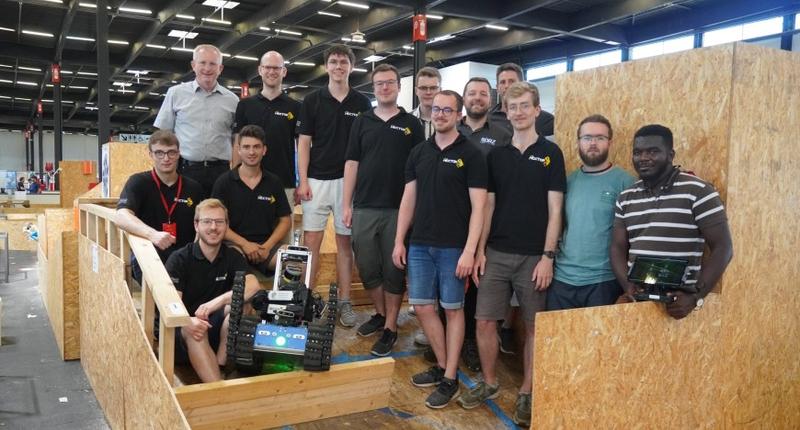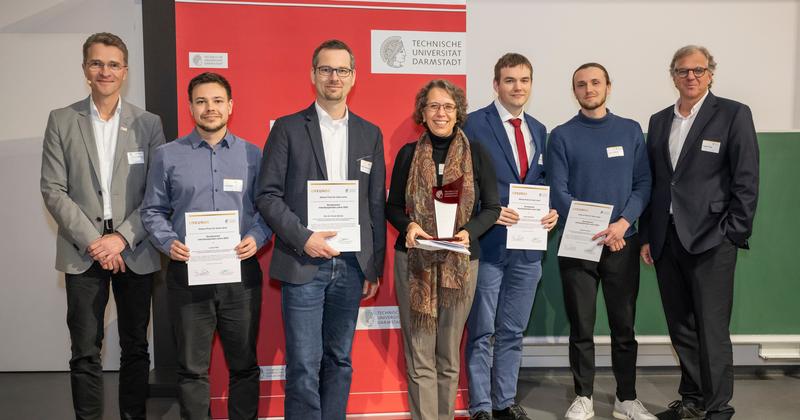This year, 14 teams from Europe as well as China, Japan, Mexico, South Korea, USA and Thailand competed with their self-developed robot systems at the RoboCup World Championship for Intelligent Rescue Robot Systems in the Rescue Robot League, held in Bordeaux, France, from July 6 to July 10, 2023.
While robots for industrial applications can be optimized for structured environments and environmental conditions as well as repetitive missions, rescue robotics faces special challenges in that the mission-specific tasks to support the rescue forces are new for each mission and the environmental conditions can naturally vary greatly and be very unstructured due to damage.
Typical requirements of a rescue operation
In various challenging arenas corresponding to different mission requirements, typical requirements of a rescue mission are recreated in the competition. The robots’ capabilities had to be demonstrated and evaluated in 20-minute missions.
The first 10 minutes consisted of navigation tasks such as crossing obstacles and stairs, opening and passing through doors or mapping an unknown terrain.
In the second half of the mission, manipulation and inspection tasks had to be performed, which were distributed around the arena. For this, areas such as pipes had to be inspected, emergency stop buttons had to be pressed and different levers had to be flipped.
Stronger focus on reliability
Compared to past competitions, this year there was a stronger focus on reliability in execution and repetitions. In addition, the point multiplier for repetitions performed autonomously by the robot was increased to more strongly encourage developments that can relieve human remote operators in their demanding tasks and make missions more effective and safer.
The crate contained various objects and a heat source that needed to be investigated.
In addition to autonomous exploration in easy-to-moderate terrain, Team Hector was able to autonomously negotiate difficult terrain with high steps and uneven surfaces this year with the help of a new algorithm for autonomous full-body control of the Asterix rescue robot developed at TU Darmstadt. Another milestone was the Dexterity points for inspection tasks in difficult terrain achieved autonomously under such difficult conditions for the first time in the history of the league.
Rank 2 in the overall standings
After the preliminary rounds, Team Hector was in 5th place and thus initially secured a place in the semi-finals of the best 9 teams. After an exciting and challenging final of the best 5 teams, Team Hector was even able to move up from 5th place in the semifinals to 2nd place despite a considerable loss of time due to the need for repairs to the robot during the heats.
In addition, several awards were won in recognition of special achievements: Team Hector was awarded Best in Class Autonomy, for the most points scored in autonomous operation, as well as for the best Team Description Paper, which explains the team’s approach and methods to promote knowledge sharing between teams.
Award for innovative further development
Team Hector was also successful in the newly introduced Technology Challenge to promote innovative further developments and secured the award. In this challenge, radio communication between the operator and the robot was systematically disrupted during the execution of relevant tasks in order to promote technologies that enable the robot to operate reliably autonomously under real conditions.
Team Hector is an interdisciplinary team of academic staff and students from the Computer Science, Autonomous Systems and Robotics, Computational Engineering, Mechanical Engineering and Mechatronics programs at TU Darmstadt’s Department of Simulation, System Optimization and Robotics in the Department of Computer Science.



